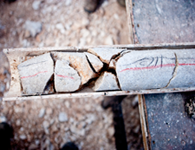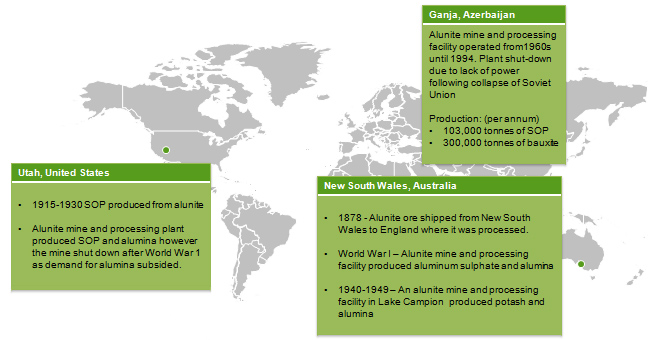Alunite KAl3 (SO4)2(OH)6, is a sulfate mineral ore used as a source of potash or for making alum. It occurs in potassium rich volcanic rocks that are white and grey in colour. It is formed in rhombohedra crystals or in fine-grained compact masses.
Alunite mineralization is found on four ridges which occur within SOPerior Fertilizer Corp’s exploration tracts. The mineralization ridges are erosional remnants of a once larger altered area. The extremely erosion resistant Silica Cap forms the tops of peaks and the underlying highly erosion resistant Quartz-Alunite facies forms the steepest parts of the ridges.
Since the mid-15th century, alunite was used in the manufacturing of alum from well-known deposits in Tolfa, Italy. During the two World Wars, alunite also severed as an emergency source of SOP in the United States and Australia, to replace supplies cut-off from Germany. A small town called Alunite near Marysvale, Utah produced potash during the First World War but during the second World War potash and aluminum were cheaper to produce elsewhere.
Also, a mine and processing plant in Azerbaijan constructed in the 1960s produced SOP and alumina from alunite for several decades.
 |
| click to enlarge |
Recent Production of SOP and Alumina from Alunite
